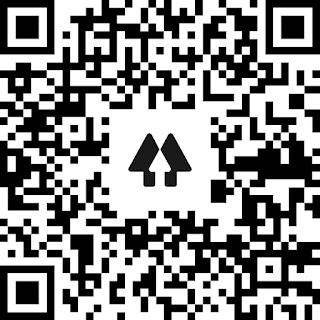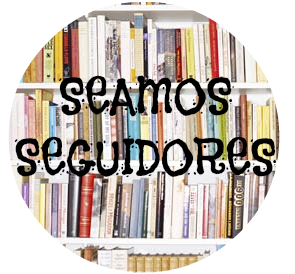Kesey’s
impact went far beyond his works of literature. His involvement in
psychedelic tests advanced knowledge about mind altering drugs. What
began as an experiment to test the effects of the drug led to Kesey
and his friends trying out the drug in a more relaxed setting. This
sparked the recreational use of psychedelic drugs such as LSD. In
addition, his musical career with his band of “Merry Pranksters”
has impacted other musicians at the time and influenced some of the
music of the 1960’s. In fact, the Oregon Historical Society has
called him a “founding father of the 1960s counterculture.” Kesey
and his friends created virtually all of the symbols of the hippie
generation from the long hair and exotic clothes down to the
recreational use of mind altering drugs.
 |
| Geneva (née Smith) and Frederick A. Kesey |
Kesey’s
parents, Geneva Smith and Fred Kesey grew up in the South, and he and
his younger brother Chuck were born in Colorado. He was born as
Kenneth Elton Kesey on September 17, 1935, in La Junta, CO. Eleven
years later, after World War Second the young family moved to
Springfield, Oregon where Ken would spend the majority of his life.
Fred Kesey found work — and a career — in the creamery business.
(Kesey’s brother would stay in the business. Chuck and his wife Sue
still own the Springfield Creamery, home of Nancy’s Yogurt
products.)
 |
| Natural foods pioneers Chuck and Sue Kesey started their Springfield Creamery on a shoestring and built Nancy's Yogurt into a brand sold coast to coast. |
A
superior athlete, Ken excelled at wresting in both high school and at
the University of Oregon. He would probably make a successful career
as a wrestler if not for the shoulder injury that made it impossible
for him to continue. Passionate about reading and films, Ken showed
clear promise as a writer throughout his academic career, but himself
was not really interested in becoming a wirter. While still at the
University of Oregon, Ken eloped with his childhood sweetheart, Norma
“Faye” Haxby, and they remained married for the rest of his life.
They had three children together: Jed, Zane, and Shannon. Ken also
had another daughter, Sunshine, in 1966 with fellow Prankster,
Carolyn “Mountain Girl” Adams.
 |
| Norma “Faye” Haxby, with whom he had 3 children: Jed, Zane y Shannon |
 |
| ‘Mountain Girl’ aka Carolyn Garcia, member of the Merry Pranksters and mother of two children with Ken Kesey. She later married the Grateful Dead’s lead singer Jerry Garcia |
 |
| Ken Kesey and his wife Faye talk with his girlfriend Mountain Girl (center) |
 |
| Ken Kesey's girlfriend Mountain Girl holds their baby |
In his youth, he just wanted to be on stage. According to his wife Faye, who had also been his high-school sweetheart, “He himself wanted to be an actor and his writing was primarily to write parts for himself.” After graduating from the University of Oregon in 1957 with a degree in speech and communication in Kesey and Faye even went to Hollywood in hopes of breaking him into the movie business. But that was not to be.
They
moved to Palo Alto, California. He entered the famed graduate writing
program at Stanford University, where he studied alongside other
future literary superstars — Robert Stone, Peter Beagle, Larry
McMurtry and he met numerous people with whom he formed lifelong
friendships—Ken Babbs, Ed McClanahan, Wendell Berry, and others.
Challenged and inspired in this environment, Kesey made great strides
forward in his writing skills.
It was also while at Stanford that he volunteered for experiments being conducted at the Menlo Park Veterans Hospital. Unknown to him at the time, these experiments where he was given psychoactive drugs, including LSD, were part of the CIA’s MKUltra project. Kesey first encountered LSD and other “psychedelics” in 1959. After many experiences with LSD, Ken came to believe the substance had great positive potential. At a time when much of the US was focused on the Space Race, and exploring further and further away, Kesey saw psychoactives as tools for exploring inward, learning more about ourselves and others, and finding new ways to see the world already around us. With this belief at heart, Ken “liberated” some of the LSD from the veterans hospital and shared it with friends. He went on to embrace the “new way to think” that the drugs seemed to represent. He began to share his experiences — and some of the drugs — with other people in the university community.
It was also while at Stanford that he volunteered for experiments being conducted at the Menlo Park Veterans Hospital. Unknown to him at the time, these experiments where he was given psychoactive drugs, including LSD, were part of the CIA’s MKUltra project. Kesey first encountered LSD and other “psychedelics” in 1959. After many experiences with LSD, Ken came to believe the substance had great positive potential. At a time when much of the US was focused on the Space Race, and exploring further and further away, Kesey saw psychoactives as tools for exploring inward, learning more about ourselves and others, and finding new ways to see the world already around us. With this belief at heart, Ken “liberated” some of the LSD from the veterans hospital and shared it with friends. He went on to embrace the “new way to think” that the drugs seemed to represent. He began to share his experiences — and some of the drugs — with other people in the university community.
He
also used his experiences working at the hospital as the inspiration
for One
Flew Over the Cuckoo’s Nest,
which became immediately successful upon its publication in 1962,
providing Ken with fame and the financial freedom to continue to
follow his heart—and his art.
One
Flew over the Cuckoo’s Nest' was published in 1962 and he became
famous overnight. The success enabled him to move to a log cabin in
La Honda, CA in 1963, where he frequently entertained his guests with
'acid test' parties
 |
| Ken Kesey‘s La Honda home in April 1965 |
The La Honda house became the “home base” for the Merry Pranksters, and the site of many Acid Tests. The “house band” was often The Warlocks, who would shortly become the Grateful Dead. It was 1964, while Ken was working on his second novel, Sometimes a Great Notion, when Ken got called to New York on work related to the book. He and the Pranksters decided to go together and made it a mission to see the World’s Fair, which was being held in the city that year. They purchased a 1939 International Harvester school bus, gave it the most psychedelic paint job the world had ever seen, and made the trip that would grow to become one of the most famous cultural journeys of modern times. Furthur was born, and become one of the most important historical, artistic, and cultural touchstones of the entire era.
 |
| Ken Kesey rides atop the bus Further on April 26, 1967, while holding a flute in San Francisco |
Then in 1964, he and his friends, the “Merry Pranksters,” made what would become a legendary cross-country bus trip. They returned to produce a series of boldly-different social events, the Acid Tests. Tom Wolfe’s Electric Kool-Aid Acid Test recounted all of this, and propelled Kesey and the Pranksters to celebrity status.
The
1960s became a time of “sex, drugs and rock ‘n’ roll,” and
the news media gave Kesey much of the credit. They anointed him “a
founding father of the ‘60s counterculture,” though Kesey would
claim to have only ridden the wave that brought the changes.
In
1965, Ken ran into legal trouble for marijuana possession, after his
return to California. After faking suicide and running away to
Mexico, he returned to the Bay Area to face the charges. He served 6
months in the San Mateo County jail, and agreed to publicly denounce
LSD. With a wink and a nod, he held the “Acid Test Graduation,”
before leaving California and moving back to Oregon, where he settled
on his Pleasant Hill farm.
 |
| Ken Kesey (rear, second from left) with associates during his trial on a marijuana charge |
By the
year 1967 and the “Summer of Love,” Kesey and his family had
already moved back to a small farm in Oregon. Ken Kesey would forge
through his remaining 30-some years as a writer, actor, farmer,
family man and all-around character. He kept his Prankster friends
and his zany ways. And he always pursued life with a purpose,
as his son Zane explains, “… to get up and do something that
makes today different than yesterday.”
In
1975, he was involved in creating the film adaption of his novel ‘One
Flew over the Cuckoo’s Nest’. But a small tiff with the
production house caused him to leave, two weeks into production.
 |
| Jack Nicholson and Will Sampson behind the scenes of One Flew Over the Cuckoo's Nest |
During
the 70s, 80s, and 90s, Ken continued to write. In 1984, Ken suffered
the loss of his 20-year-old son Jed in a tragic auto accident. Kesey
continued to perform, though, often appearing on stage at Grateful
Dead concerts. He also made a number of trips with the second version
of Furthur—including one to England and another to the Rock and
Roll Hall of Fame, in Cleveland—and performed his musical play
Twister to numerous audiences on the West Coast. When he wasn’t
traveling, performing, or writing, Ken spent his time working on the
farm or enjoying the company of his extensive family and friends in
the Eugene, OR area.
He
underwent a liver surgery to remove a tumor, but passed away due to
surgical complications on November 10, 2001.Ken Kesey died of
complications from liver surgery on November 10, 2001, leaving behind
legions of mourning fans, and a world forever changed for the better
because he had been in it.
Sources:


















Comentarios
Publicar un comentario